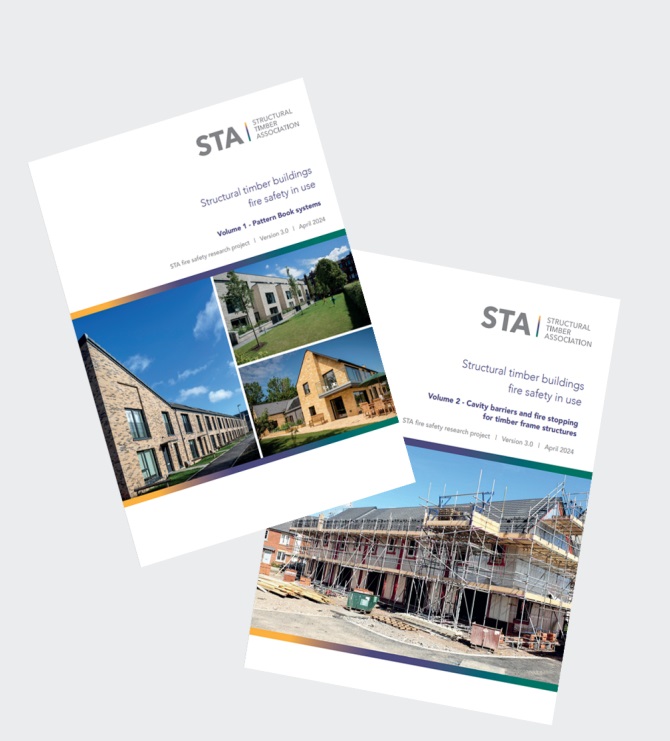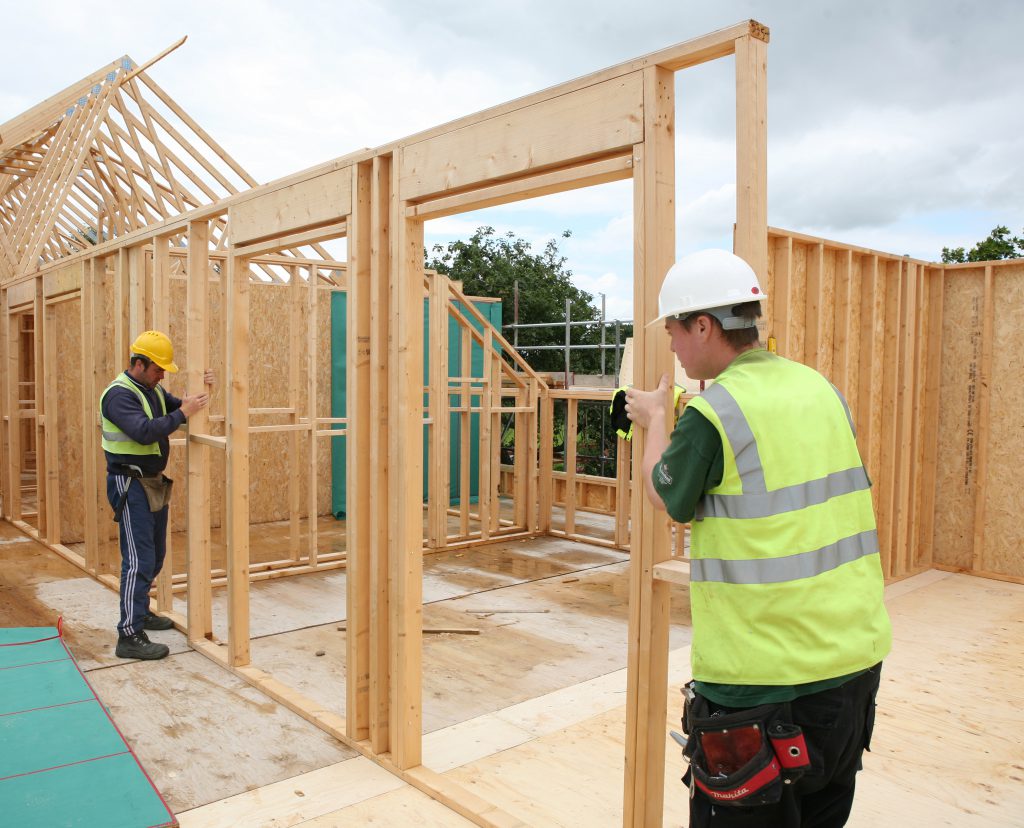The Structural Timber Association (STA) as part of their continual development programme both undertake product fire testing on behalf of the membership and support members with their own fire testing programmes. The output of these programmes is the production of a series of research documents outlining timber frames and structural insulated panels (SIPs) that have been fire tested and have been confirmed as complying with the regulation requirements.
Timber Frame and Structural Insulated Panel (SIPs) construction are well established methods of building with a proven track record of mainstream compliance and longevity. It is widely recognised as the offsite construction system of choice, offering many benefits, including low carbon, cost effective, quality, speed and regulatory compliance.
Fire safety in use affects all forms of construction. All buildings must be designed to comply with the functional protocols of the Building Regulations for fire safety requirements, as a minimum standard. The STA has invested in an industry leading fire in use research project to test and prove commonly used timber frame wall, floor and roof make ups used in the UK marketplace.

Access the Research
One output of this research undertaken by STA, in collaboration with BE ST (Built Environment – Smarter Transformation) formerly Construction Scotland Innovation Centre (CSIC), the University of Edinburgh and BRE was to produce fire safety in use guidance for timber frame buildings, as a pattern book of EN tested systems, is believed to be the first of its kind in the UK timber frame sector.
The EN tested systems and best practice recommendations provide a comprehensive package of information, for the design, specification and construction of timber frame buildings. This research, Volume 1, now forms part of the STA’s library of fire in use best practice guidance. The STA library of documentation provides comprehensive guidance, information and recommendations on system specifications and good practice principles when using timber frame construction.
The project was organised into four distinct, but connected work packages, running in parallel to gather the relevant data required for the pattern book.
- Stage 1 – Completion of research into various aspects of timber fire safety and testing
- Stage 2 – Completion of a large programme of full-scale fire EN fire resistance testing, including collaboration with Engineered Wood Products Committee (EWPC) and Trussed Rafter Association (TRA) testing programmes
- Stage 3 – Collation of all research and test information, for analysis, peer review and validation by BRE, and the subsequent endorsement by verifiers and regulators
- Stage 4 – Creation of the pattern book Volume 1
It is important to recognise these tested solutions are only applicable if used by an STA member supplier/installer
This research, which has been supported by Swedish Wood and the Scottish Forestry, has been endorsed by several industry and government stakeholders. The pattern book of systems provides a unique reference library of information for clients, specifiers and STA members to use with confidence.
The second output, in addition to the extensive fire in use research of timber frame systems, was identified by the STA that the installation of fire stops and cavity barriers are of equal importance when it comes to building safety, an issue which prevails regardless of the building methodology. The STA have responded by developing a new guidance document on cavity barriers to complement the existing information.
The third output was to invite STA members that have undertaken their own research and fire testing to submit their frame solutions for publication in the STA Fire Research Volume 3. This document will have many more timber frame and SIPs solutions to provide the broadest possible variants for the designers to use, in the knowledge they are fully fire tested. Each style of timber frame and SIPs illustrated in Volume 3 is attributed to the manufacture that owns the test data and can only be a tested solution if that STA member supplies that Timber Frame/SIP.
The information will be regularly reviewed and updated by the STA Technical Committee and Board and the pattern book and guidance on fire stops and cavity barriers are free to download from the Structural Timber Association’s document library
